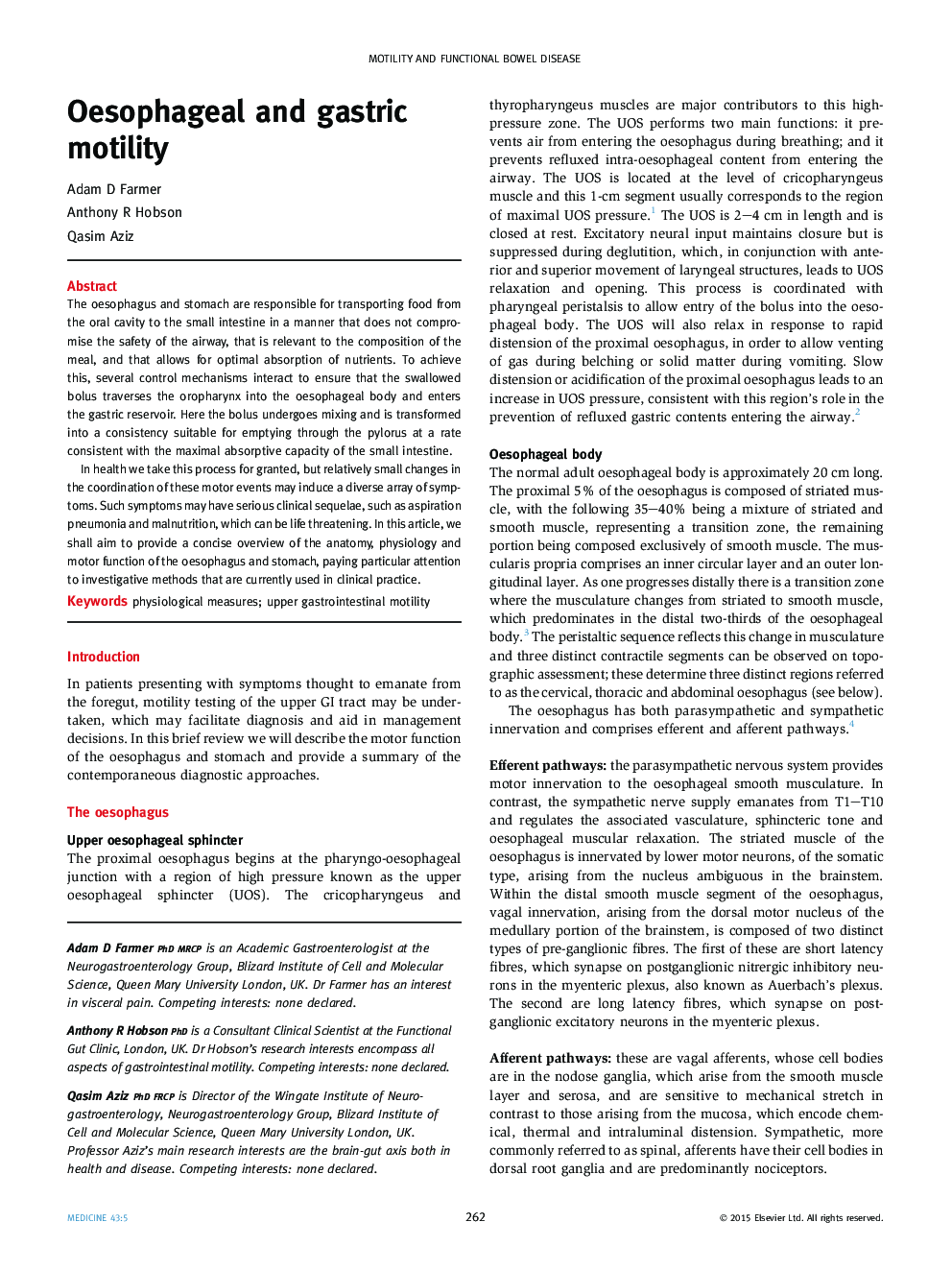| Article ID | Journal | Published Year | Pages | File Type |
|---|---|---|---|---|
| 3806850 | Medicine | 2015 | 4 Pages |
The oesophagus and stomach are responsible for transporting food from the oral cavity to the small intestine in a manner that does not compromise the safety of the airway, that is relevant to the composition of the meal, and that allows for optimal absorption of nutrients. To achieve this, several control mechanisms interact to ensure that the swallowed bolus traverses the oropharynx into the oesophageal body and enters the gastric reservoir. Here the bolus undergoes mixing and is transformed into a consistency suitable for emptying through the pylorus at a rate consistent with the maximal absorptive capacity of the small intestine.In health we take this process for granted, but relatively small changes in the coordination of these motor events may induce a diverse array of symptoms. Such symptoms may have serious clinical sequelae, such as aspiration pneumonia and malnutrition, which can be life threatening. In this article, we shall aim to provide a concise overview of the anatomy, physiology and motor function of the oesophagus and stomach, paying particular attention to investigative methods that are currently used in clinical practice.
